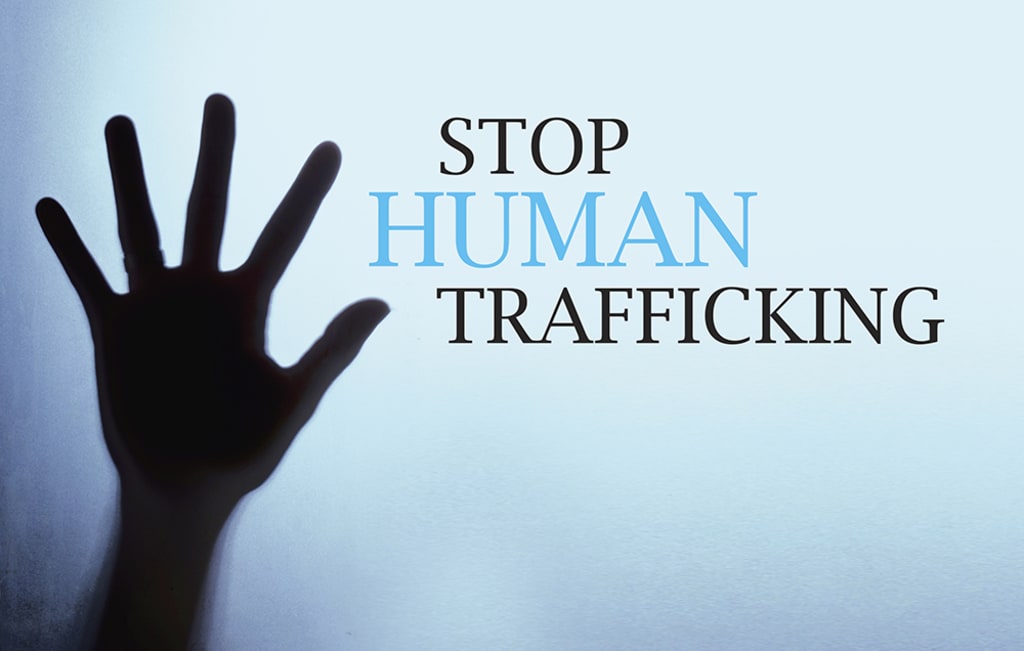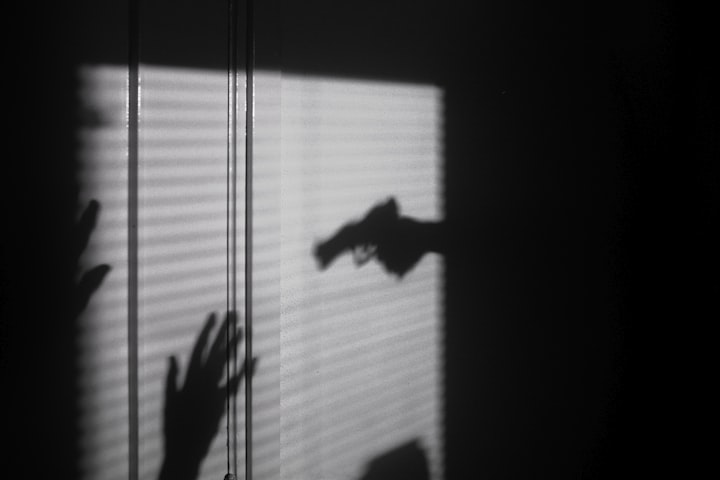Modern Day Slavery: Human Trafficking
Why does it thrive and why aren't people trying to stop it?

The United States 13th Amendment declares
“Neither slavery nor involuntary servitude, except as a punishment whereof the party shall have been duly convicted, shall exist within the United States, or any other place subject to their jurisdiction.”
This Amendment, ratified in 1865, protects all Americans from experiencing slavery unless a crime has been committed. Everyone in our fair country knows this and is aware of it, but what way too many Americans don't know if there is still a form of modern-day slavery happening as we speak, and it's called human trafficking.
Why does human trafficking thrive?
Human trafficking is a criminal industry, and like other businesses, it is based on supply and demand. Where the law is disregarded, human trafficking begins. When the public doesn't know of this issue, when government and law enforcement are not trained to respond to these situations, when there are ineffective laws to address the crime, when services for victims do not exist or are poorly funded, and when law enforcement does not prosecute the perpetrator, human traffickers see no reason to stop their crime.
When individuals are willing to pay for a prostitute they make it possible for traffickers to exploit children and adults and make money while doing so. When consumers are willing to buy goods and services from industries that live off of forced human labor, they create a way for traffickers to make money easily.
"Why should I care? It isn't happening to me."
Human trafficking affects us all. It could happen to your mother, your wife, your daughter. It could happen to your nephew, your uncle, your dad or son. It can happen to the three-year-old girl down the street, and she would never be seen again.
Victims of human trafficking can be found in high schools, being sold as prostitutes so that their boyfriend/girlfriend can get money, drugs or alcohol. They can be in restaurants, working long hours for little pay, with the threat of being deported looming over them constantly. They can be seen in pornographic movies or photo shoots, being forced to work under the false promise of “making it big.”
The clothing on our backs could be from adults and children who slaved in a sweatshop involuntarily. The produce and coffee we eat and drink are often picked by workers that are convinced to work long hours without receiving the pay they were guaranteed. As much as we would all like to look beyond everything and pretend that human trafficking isn't happening, the truth is right in front of us: human trafficking is all around us, and it is affecting us all.
We should be concerned about human trafficking because it goes hand in hand with many other social issues. It is connected to sex and racial inequality because, at its root, is the belief that one human life is less than another. It is connected to domestic violence because a family member or spouse is all too often the pimp. We need to keep in mind that human trafficking can happen to anyone at any time, and the only way we can stop trafficking is if we work together.
Who is at risk?
Anybody can be at potential risk. According to the National Human Trafficking Hotline, there are three populations victims of human trafficking can be categorized into:
- Children (under 18 years of age) brought into sex trafficking
- Adults (age 18 or over) induced into commercial sex through force, fraud, or coercion
- Children and adults induced into labor trafficking through force, fraud, or coercion
Human trafficking victims can be found in cities, suburbs, or rural areas. They have been found in all 50 states and all over the world. Runaway youth are at especially high risk due to their need of money, food, and shelter.
Victims of human trafficking have diverse socio-economic backgrounds, varied levels of education, and may be documented or undocumented. Traffickers target victims using tailored methods of recruitment and control they find to be effective in compelling that individual into forced labor or commercial sex.
Trafficked individuals have different socio-investment backgrounds, too.
What are the signs?
Almost every country in the world is impacted by trafficking, and traffickers often use airplanes and airports to move their victims from place to pace. Sometimes, victims are flown into another country on the promise of a legitimate job, other times traffickers move their victims within a country. Keep an eye out for these signs:
- Victim has a barcode tattoo. There are lots of people with tattoos, so obviously, this isn't what you should base your findings off of, but traffickers typically have a barcode or some kind of tattoo on their victim so they know who they "belong to". Keep an eye out for a barcode tattoo, a tattoo with a person's name, a gang tattoo, etc.
- The victim isn't dressed like anybody else. If you're on a flight to Anchorage, Alaska, and there's somebody near you with shorts and a t-shirt on, be aware. If someone is walking around with a partner and the other person is better dressed, beware. If the person is wearing clothes that don't fit properly, be on the lookout. Oftentimes the person will have very little to no belongings, and what belongings they do own their trafficker will probably be carrying for them. It is the subtle stuff you must look out for.
- They don't provide details on their travel. Traffickers use many ways to avoid raising suspicion about their crime and to keep victims under their control. Some traffickers won't tell their victims where they are, where they're being taken, or even what job they will have. Because victims don't have the means to get home or pay for things like food and shelter, they rely on traffickers in order to get basic necessities, forcing them to stay in their situation.
- Communication seems scripted. Victims will often deter any conversation, but when they do talk, it will almost always seem scripted, as if they're in a play. This is because their trafficker is close by, and they could get hurt if they say something remotely out of line. It may sound like they're being rude, but they aren't, they are being controlled. They might be followed, and the trafficker will watch them very closely to make sure they don't escape or reach out for help.
- They won't talk about themselves. They are afraid to talk about themselves while near others, rejecting any and all attempts at conversation. Fear is one of the tools that traffickers use to control their victims. Traffickers will often stop their victims from talking with the public because the victim might say something of their situation.
- Children looking unwell. Children who are being trafficked for sex sometimes might look like they're under the influence of drugs, alcohol (or both). They might also have bruises or scars from abuse, and they could also look malnourished. Unable attend school on a regular basis and/or unexplained absences, running away from home a lot, depression, anxiety, or fear, a “boyfriend” or “girlfriend” who is older and controlling, and sudden transition towards hygiene (never showering, or maybe showering multiple times a day) are also big warning signs of someone being child trafficking.
If you suspect someone is being trafficked, try and keep them in a safe, public area with lots of people, because traffickers are less likely to attack you or the victim in the open near other people. Notify security, the police or others around you so the victim can get to safety. Try not to do anything yourself, traffickers can be dangerous and will not hesitate to hurt you when given the chance. Call 911.
How To Help
There are many things you can do to help victims of trafficking, and help end human trafficking. One thing is to call 911 or get them to a public space with a lot of people. Another way is to be an informed consumer. Know where your product is coming from. Here is a link to a government site that tells you what comes from child labor:
Below is a list of numbers that can be called:
- Emergency, 911. Emergency only, open 24/7/365 most of the time not multilingual. The responder could get a translator for you, but that could take extra time, and in an emergency, time is of the essence. Anonymous reporting is available. Toll-free.
- Human Trafficking Resource Center, 1 (888) 373 7888, or text “HELP” or “INFO.” Open 24/7/ 365. Toll-free, and multilingual, with 200+ languages. Anonymous reporting is available.
- ICE, 1-866-347-2423. Toll-free, 24/7/365 (NOTE: if you are undocumented, you do not need to worry. ICE understands that many victims are brought into countries they've never been to, with different languages they are unable to speak, that traffickers often take the victim's travel and identity documents, and are told if they try to escape either themselves or their families will be hurt. ICE recognizes that in order to investigate and prosecute, they need a witness that is mentally and physically stable, and free from intimidation. Again, if you or someone you know is being trafficked and are undocumented, there is no need to worry about being deported.)
If you are a business owner, hire survivors of trafficking, or give another business owner a reference of the survivor. Provide jobs, internships, skills training and other opportunities.
Students, TAKE ACTION! Join or establish a club to raise awareness about human trafficking, and take action to your community. Consider doing a project, or a paper for a class on human trafficking. Ask your school/university to provide a lesson on the dangers of human trafficking.
Healthcare providers, offer low-cost to free healthcare for victims of trafficking.
Lawyers, offer low-cost or free legal services to victims of trafficking.
People are not a currency. For more information on human trafficking, visit these sites below:






Comments
There are no comments for this story
Be the first to respond and start the conversation.